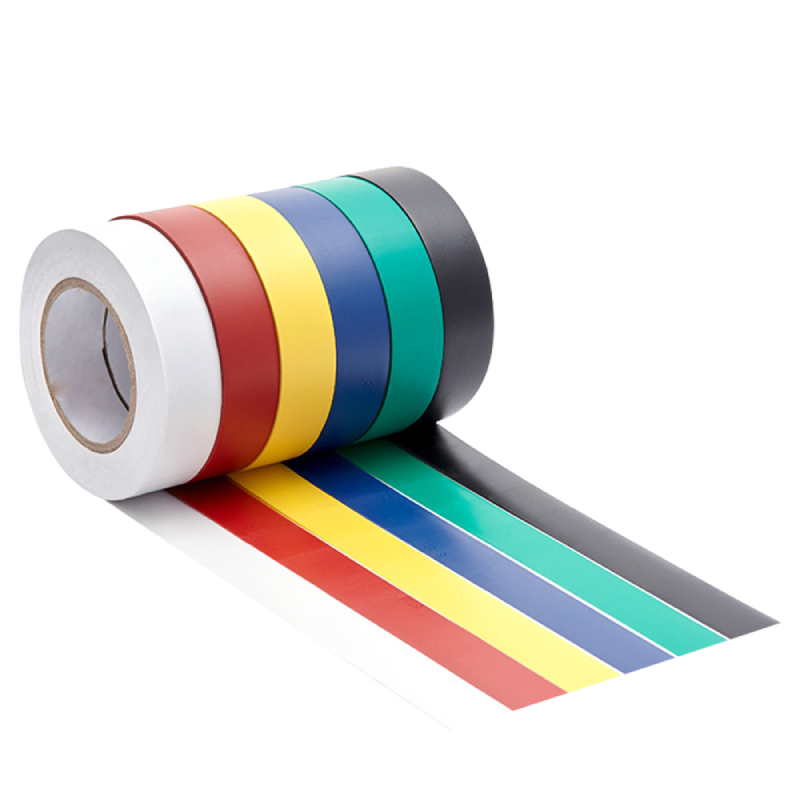The Importance of Rubber Insulating Tape in Electrical Applications
Rubber insulating tape is a critical component in the world of electrical engineering and maintenance. Its unique properties make it an essential tool for professionals working with electrical systems, as well as for DIY enthusiasts. This versatile product serves several functions, primarily insulation, protection, and adhesion, which are vital for safe and efficient electrical installations.
Composition and Characteristics
Rubber insulating tape is typically made from high-quality rubber, which provides excellent flexibility, durability, and resistance to environmental factors. The tape is generally coated with a strong adhesive on one side, allowing it to stick effectively to various surfaces. One of the defining characteristics of rubber insulating tape is its ability to withstand high voltages, making it suitable for insulation on conductors and electrical connections.
The rubber material provides excellent electrical insulation properties, enabling the tape to prevent electric current from escaping the intended path. This is particularly important in reducing the risk of electrical shocks and preventing short circuits, both of which can lead to hazardous situations. Additionally, rubber insulating tape is resistant to moisture, chemicals, and abrasion, ensuring long-lasting performance even in challenging environments.
Applications
Rubber insulating tape is widely used in various applications across multiple industries. In residential and commercial electrical installations, it serves as an effective insulator for wires and cables. It is commonly used for splicing wires, wrapping connections, and insulating exposed conductors. The tape's flexibility allows it to conform to different shapes and sizes, providing comprehensive coverage that enhances safety.
In the automotive industry, rubber insulating tape is employed to protect wires and electrical connections from moisture, dirt, and abrasion. This is crucial for maintaining the integrity of electrical systems in vehicles, where exposure to harsh conditions is common. By using rubber insulating tape, automotive technicians can ensure that electrical components remain functional and reliable for an extended period.
rubber insulating tape

Moreover, in the telecommunications sector, the tape is utilized to insulate and protect cables that transmit data. Its high dielectric strength is advantageous in preventing signal loss and maintaining the efficiency of communication systems. This application highlights the essential role of rubber insulating tape in modern technologies.
Installation and Best Practices
When using rubber insulating tape, proper installation techniques are critical for achieving optimal performance. First, the surfaces to be taped should be clean and dry to ensure maximum adhesion. It is recommended to apply the tape with a slight stretch, wrapping it tightly around the circumference of the wire or connection. This not only enhances insulation but also increases the mechanical strength of the bond.
Overlapping the tape is another important practice. A minimum of half the width of the tape should overlap with each turn to ensure comprehensive coverage and eliminate any gaps that could expose electrical components. Additionally, it is crucial to avoid applying the tape over sharp edges or protrusions that could potentially puncture the tape, compromising its effectiveness.
Another best practice is to label or mark the taped areas, especially in complex wiring systems. This can help future maintenance workers identify connections quickly and efficiently, reducing the risk of mistakes and ensuring safety.
Conclusion
Rubber insulating tape is an indispensable tool in the realm of electrical work. Its ability to provide insulation, protection, and durability makes it a preferred choice among professionals and hobbyists alike. As technology evolves and electrical systems become increasingly complex, the importance of reliable insulating materials like rubber insulating tape continues to grow. By understanding its properties, applications, and best practices, users can enhance safety and efficiency in their electrical installations and repairs, contributing to safer environments for everyone.
-
XIANGFAN Rubber Tape-Ultimate Solutions for All Your Insulation NeedsNewsJun.24,2025
-
XIANGFAN Rubber Tape-Protection for Industrial and Residential ApplicationsNewsJun.24,2025
-
XIANGFAN Rubber Tape: Superior Safety and Sealing for Demanding EnvironmentsNewsJun.24,2025
-
XIANGFAN Rubber Tape: Reliable Solutions for Every Electrical ChallengeNewsJun.24,2025
-
XIANGFAN Electrical & Industrial Tape: Powering Reliability Across IndustriesNewsJun.24,2025
-
XIANGFAN Electrical & Industrial Tape: Excellence in Every ApplicationNewsJun.24,2025
